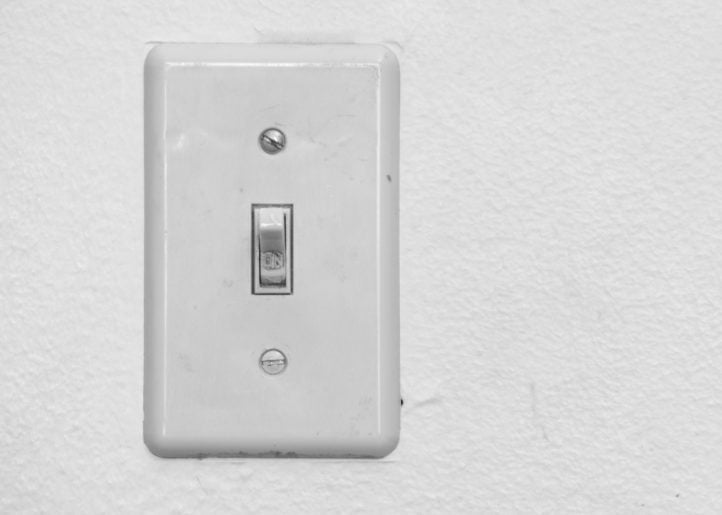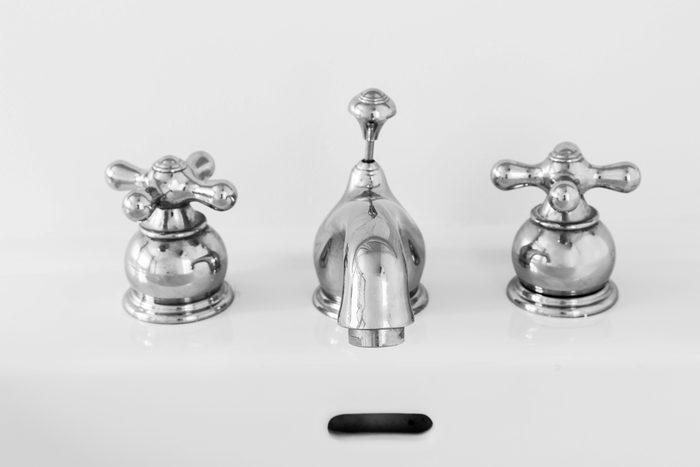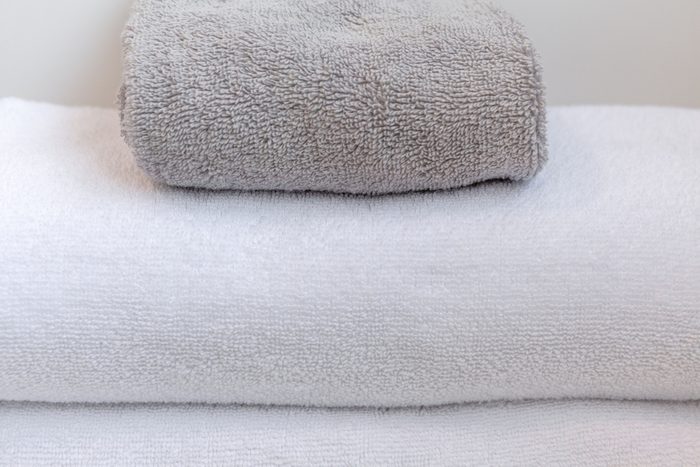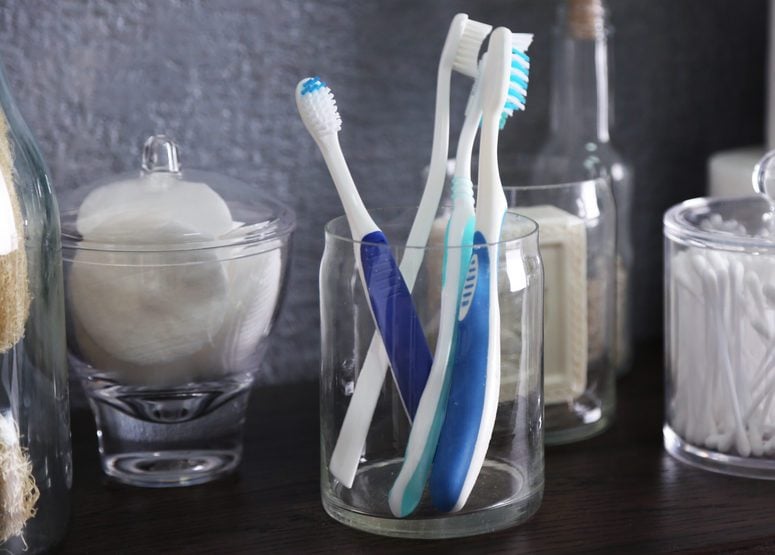
Light switches and doorknobs
Cold and flu viruses most often travel from person to person in airborne droplets of moisture expelled when someone sick exhales, talks, coughs, or sneezes. But the germs are also spread by contact—both with infected people and with objects they’ve touched. “When a household member is sick with cold or flu, the whole household likely is contaminated,” says Amesh A. Adalja, MD, a senior scholar at the Johns Hopkins Center for Health Security. Common spots for viruses to hide are those that are touched often and rarely cleaned, such as door handles and light switches, according to a 2007 study in the Journal of Medical Virology. Consider wiping down high-touch surfaces around the house with a disinfectant every day when someone in the house is sick. “Cleaning areas that are common touch surfaces with disinfectant wipes or soap can diminish chances of infection,” says Dr. Adalja. Check out these 12 everyday items that are dirtier than your toilet seat.

Your housemates
You’re much more likely to catch a cold or flu directly from close contact with a friend or family member than you are a contaminated object, says Dr. Adalja. Virus-filled droplets of moisture can be expelled when someone simply exhales, talks, or laughs—not just when he or she coughs or sneezes. “Transmission is primarily from person to person; surfaces play a much smaller role,” he explains. Holding hands or snuggling is risky too, since rhinoviruses can live on hands for at least an hour, and other respiratory viruses can survive on clothes for up to 45 minutes. So as much as you can, avoid close contact with friends and family members who have a cold or flu.

Coffee mugs and drinking glasses
You know not to drink out of the same cup as a sick spouse or roommate. But do you wash your hands after tidying up and carrying that person’s cup to the sink? You should: A classic study in the American Journal of Epidemiology found that half the people who touched coffee-cup handles that were previously handled by people with colds came down with the sniffles themselves. Washing your hands with soap and water is one of the best ways to avoid getting sick, according to the Centers for Disease Control and Prevention (CDC). Be sure to wash for at least 20 seconds—long enough to sing “Happy Birthday” twice. Avoid making these 10 handwashing mistakes.

TV remote controls
Grubby hands are constantly touching your TV remote control—but when’s the last time you cleaned it? According to the American Academy of Family Physicians, the remote is considered a cold and flu hot spot, so it’s important to frequently wipe it down with a disinfectant wipe to get rid of bacteria and viruses.

Faucet handles
Only 39% of people always wash their hands after they cough or sneeze, according to a survey by the American Microbiology Society and the American Cleaning Institute. Even if they do wash up afterward, they’re likely to deposit virus on several things on the way to the sink, such as doorknobs, light switches, and water-faucet handles. Cold viruses can survive on hard, nonporous surfaces like metal or plastic for several days, and flu viruses can last for up to 24 hours. Consider keeping disinfectant wipes next to the sink for frequent handle cleaning. Check out 50 more ways to avoid getting sick this year.

Towels and washcloths
Viruses dry out and die more quickly on porous surfaces like cloth or tissue than they do on nonporous, hard surfaces, says Dr. Adalja. But they can survive on damp fabric for a little while—so don’t share towels or washcloths. Influenza remains infectious for about 15 minutes on soft materials, a respiratory virus known as RSV can survive for up to 45 minutes, and the virus that causes croup can live for up to four hours on cloth or tissue.

The toothbrush holder
When you have a cold or flu, you transfer the virus to your toothbrush every time you pick it up. These germs can end up in your toothbrush holder—and then on neighboring toothbrushes. Consider keeping toothbrushes separate in your house, especially when you or someone else in the house is sick. Read up on the other germiest places in your bathroom.

Pens, pencils, and markers
Because cold and flu viruses can survive on hard surfaces like plastic for hours or even days, that shared household cup of pens, markers, and pencils can become a viral hotbed during cold and flu season. It might be hard (OK, impossible) to remember to wash your hands every time you touch a shared object, so try to avoid touching your face after using a shared pen or pencil—at least until you can wash your hands. “Our eyes, nose, and mouth are vulnerable to attack from many common cold viruses and influenza,” J. D. Zipkin, MD, associate medical director of Northwell Health–GoHealth Urgent Care. “It is natural for all of us to touch our faces frequently throughout the day, whether we are rubbing our eyes, have an itch, eating, or moving our hair. As a physician, it has taken me years to train my hands to avoid touching my face while I’m at work.” Find out the 11 everyday items you don’t wash as often as you should.
